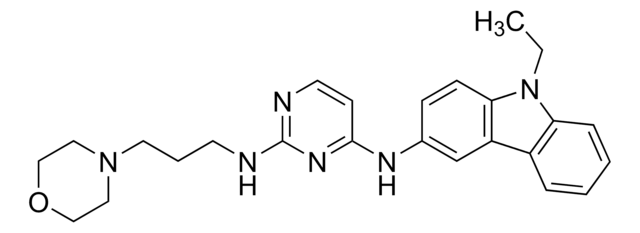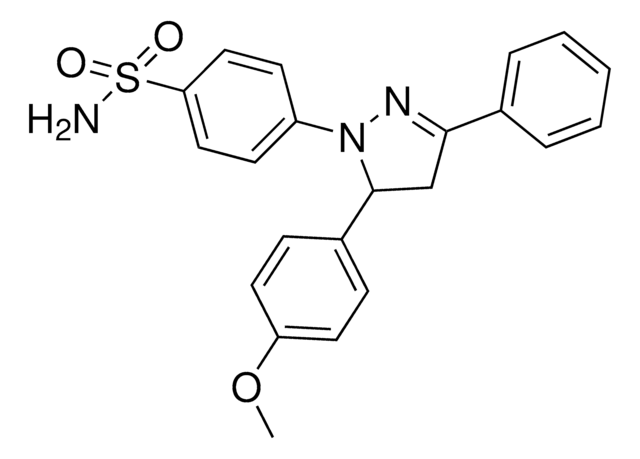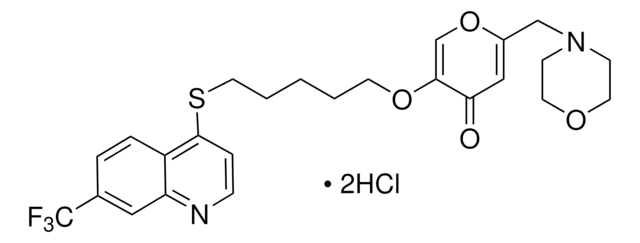SML1253
CASIN
≥98% (HPLC)
Sinónimos:
2-[(2,3,4,9-Tetrahydro-6-phenyl-1H-carbazol-1-yl)amino]ethanol, Cdc42 Activity-Specific Inhibitor
About This Item
Productos recomendados
Quality Level
assay
≥98% (HPLC)
form
powder
color
, white to very dark brown
solubility
DMSO: 20 mg/mL, clear
storage temp.
2-8°C
SMILES string
OCCNC1CCCC2=C1NC3=C2C=C(C4=CC=CC=C4)C=C3
InChI
1S/C20H22N2O/c23-12-11-21-19-8-4-7-16-17-13-15(14-5-2-1-3-6-14)9-10-18(17)22-20(16)19/h1-3,5-6,9-10,13,19,21-23H,4,7-8,11-12H2
InChI key
RXIUMAOXORBRCY-UHFFFAOYSA-N
Application
- to study its effects on the stimulation of extracellular vesicles (EVs) in intestinal epithelial cells
- to study its effects on mice jejunum
- to study its effects on microbial adhesion-triggered endocytosis (MATE) vesicle morphology in segmented filamentous bacteria (SFB)-colonized mice
Biochem/physiol Actions
Storage Class
11 - Combustible Solids
wgk_germany
WGK 3
flash_point_f
Not applicable
flash_point_c
Not applicable
Certificados de análisis (COA)
Busque Certificados de análisis (COA) introduciendo el número de lote del producto. Los números de lote se encuentran en la etiqueta del producto después de las palabras «Lot» o «Batch»
¿Ya tiene este producto?
Encuentre la documentación para los productos que ha comprado recientemente en la Biblioteca de documentos.
Nuestro equipo de científicos tiene experiencia en todas las áreas de investigación: Ciencias de la vida, Ciencia de los materiales, Síntesis química, Cromatografía, Analítica y muchas otras.
Póngase en contacto con el Servicio técnico






